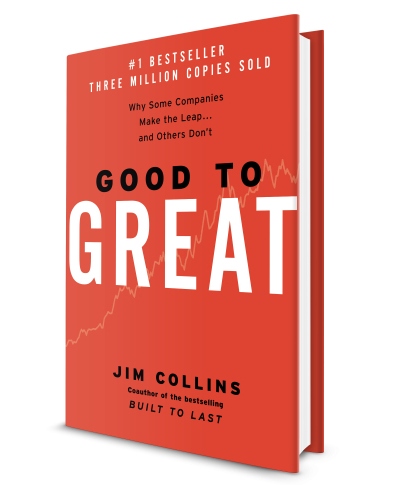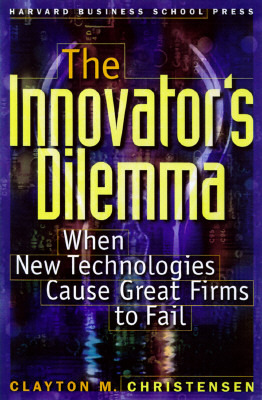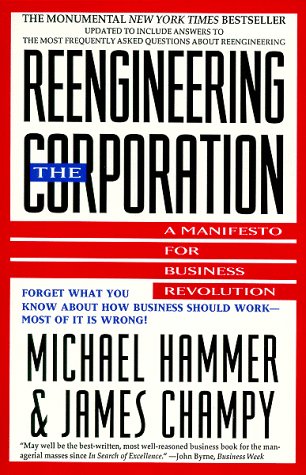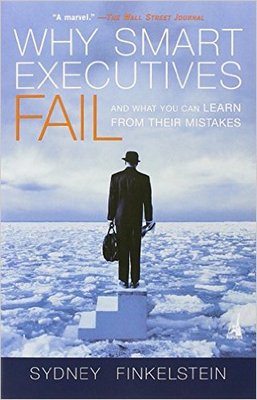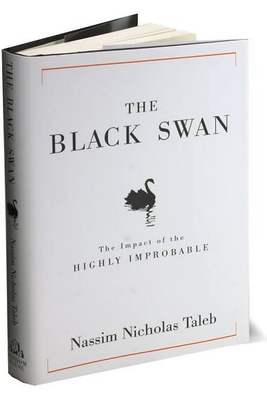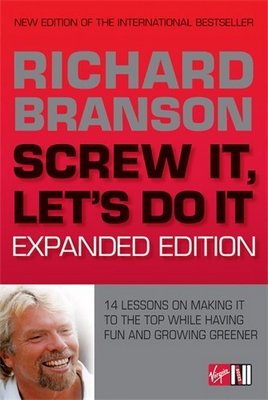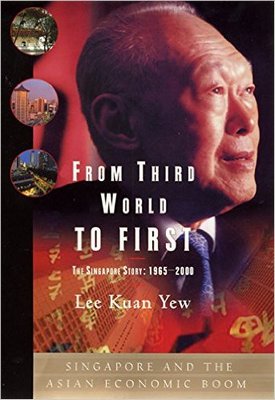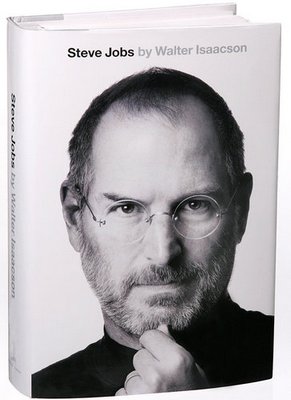December 27, 2016
Seven Books for Highly Effective Reading.
I regularly get asked which books should be read to build up a successful business. Students, start-uppers, managers, business owners – everybody wants a reading list! But that’s ok, for I do have some answers. However, I don’t believe one can become a businessperson by reading certain books, no matter how highly recommended they come. Still, there are some great books out there that sure won’t do any harm reading; eight of which I’ll tell you about in this here post…
I divide business books into two major categories.
The first helps readers with what needs to be done to build up a successful business; the second – how not to do it. The boundary is often blurred, but taken together books from both groups can help readers avoid both spending valuable time and resources on re-inventing the wheel again and again, and make the exciting business of… building a business a constant struggle.
Actually, there’s also a third category of books – works by legendary captains of business or government leaders, which instruct by example how things should be done. Such books are normally rather general as they cover such a broad range of business problems and unpredictable unexpectednesses, while also demonstrating limitless possibilities – albeit hazily. They don’t contain hands-on action plans, but they’re still well worth a read to get valuable overarching insights.
Many of the books in my list here were written quite a while ago – some even in the last millennium – so whole new industries and technologies of the 2000s are either hardly touched or aren’t touched at all. All the same, the books are still relevant to modern times; their main ideas can easily still be applied to today’s digital realities. We’re living in an era of new technologies, but man’s nature is still the same, and folks tend to repeat the same or similar mistakes. Not all folks, mind: others do things right and their companies become widely recognized and respected leaders. Which is what I hope for everyone.
All righty – here we go. Happy reading – of this post and then the books detailed in it!…
Jim Collins. Good to Great: Why Some Companies Make the Leap…And Others Don’t
I’d call this the most important book in my business library. In plain language and with lots of practical examples, the author convincingly analyzes the traits commonly found in various types of leaders. This book is one of the few in my first category mentioned above: How to build a great business.
This is more than a book really – it’s a majorly significant, seminal work – a magnum opus even. And since it’s based on a full five years of painstaking research conducted by a large team, it’s possible to place it in the category of the exact sciences, which can’t be said often for business books.
What the author did was select great companies, mediocre companies and poorly-performing companies, and analyzed their common characteristics and differences; for example, what did the great companies do and not do, and what did the other two categories do and not do.
What’s the recipe for success, and what are the ingredients that can signal collapse? As it turned out, it’s all rather simple. Successful companies possessed (and unsuccessful companies didn’t) the following characteristics:
- ‘Level 5 Executives’: not necessarily charismatic visionaries; more like the opposite: humble hard-workers;
- “First Who, Then What: get the right people on the bus, then figure out where to go. Finding the right people and trying them out in different positions.”;
- “Hedgehog Concept: Three overlapping circles: What lights your fire (‘passion’)? What could you be best in the world at? What makes you money (‘driving resource’)?”;
- Other things too – but I’ll leave those for you to find out when you read the book.
And if you find that the descriptions of successful leaders or businesses in this book are applicable to yourself/your company, you probably will – or already do – lead a very successful company and thoroughly exciting life. I saw KL in a lot of Collins’ recipes for success, which thankfully we’ve been following. I hope you see a lot about yourself/your company too. Pleasant (and inspiring) reading!
Criticisms of the book:
- The methodology compares only public companies – not private ones, since they live different lives altogether: they have different approaches to goal-setting, planning, structure and so on;
- Internet companies are only mentioned in passing. This too can be explained by the methodology.
All the same, the take-always from the book can be applied by more than just traditional businesses like factories, supermarkets, drugstores and airlines. Internet businesses will be able to use them too, as will markets not mentioned. And I reckon governments could also improve by adopting the book’s principles too.
Clayton M. Christensen. The Innovator’s Dilemma: When New Technologies Cause Great Firms to Fail
This is a very interesting book for those interested in working out how the world of business really ticks. A significant proportion of the book is all about how NOT to do business. Several examples are given of how old and stable companies gradually get squeezed out by young companies to become mere niche players or to disappear altogether. These examples describe situations where leading companies seemingly do everything right: the latest technologies, products catering to all tastes, customers happy, investors happy, darlings of the press… but then – BOOM: the next thing they know they’re on the sidelines of evolution instead of being drivers of it.
Here’s the book’s blurb:
When you’re running a business, quite often you face the simple question: what the hell is going on?! In many cases this book helps in finding the answer. The book is about successful well-run companies that invest in the development of technologies and listen to their customers’ needs, but still nosedive, struggle and lose their business. One of the key subjects of the book is ‘disruptive technologies’. And whenever you hear anybody speaking about disrupting something (and I bet you hear or read this stuff pretty often as it’s virtually everywhere) you can thank Clayton Christensen for starting the buzz.
What’s particularly interesting about this book is how it contains many stories about different companies from completely different industries (examples: IT, metallurgy and machine building) – and they all turn out to be astonishingly similar!
Almost all the case studies follow the same basic storyline:
- There’s a market;
- The market becomes overgrown by small newcomer companies, which offer something extra, something a bit different – a product/technology/service for which there’s no demand yet. In the book this is referred to as ‘disruptive innovation’.
- Having created demand, the newcomers gradually form a new market (this is also mentioned in Blue Ocean Strategy (see below)).
As a result the newbies take from the ‘elders’ first of all the small and uninteresting low-profit niches. Then they take over the lower segment of the market. That lower segment is normally of little interest to big companies – it’s low-profit, labor-intensive and hassle-laden, and it normally consists of demand for some kinda primitive and/or uninteresting knick-knacks not worthy of the time and attention of the proud engineers of the recognized market leaders.
Next, the newbies continue to rise up, forever developing their services or products, and eventually at some point it turns out that new disruptive innovations become a new branch in its own right – one which fully satisfies the most the lucrative of customers – rich corporations that need only the very best. And in that way they eventually take over the whole market from top to bottom. This process is completely logical and inevitable.
Meanwhile, yesterday’s inspiringly impressive behemoths become the next victims of disruptive technologies – victims of ruthless technological evolution.
Those behemoths are gradually squeezed up onto the very top floors (the tastiest and most profitable market segments), but under the constant pressure from below they often dissolve up there and disappear. And this pattern is repeated over and over! New newbies come along to squeeze out the former newbies who’ve become established, and on and on – infinitely.
The book is, IMHO, very pertinent to IT companies today, since in our industry change occurs the fastest. The ‘Innovator’s Dilemma’ here is not simply fatal – it’s instantly fatal.
Michael Hammer and James Champy. Reengineering the Corporation: A Manifesto for Business Revolution
Here’s a typical story of the growth of a modern, large, well-known company: it starts out as a small family business, garage startup, or small company founded after breaking away from another. The business grows, the number of customers does too. Turnover gets measured at first in the thousands, then in the millions, then tens and then hundreds of millions, and maybe even billions. The company goes from unnoticed newbie, to a medium-sized player, to (if lucky/smart) a global multinational big gun.
Throughout the journey from small to big, structure, processes and habits appear. At first they work excellently; but they would: they’re the processes and technologies that made the company successful in the first place. But later on they start to play up, glitches occur, customers (even the most loyal) one by one get lost to the competition, and the company starts losing market share, sometimes even to the extent of bankruptcy. And there a great many stories just like this.
So what happens? What goes wrong? And who’s to blame and what needs doing to turn things around?
It’s those questions that get answered in this book. Actually, the ‘who’s to blame?’ and ‘what to do?’ questions are linked – for the answer to the first automatically gives the answer to the second; namely: the company needs to implement changes. Which specific ones and how to implement them – that depends on the particular business and the industry it’s in. But the changes are categorically mandatory; without them: stagnation and then oblivion.
I quote (sorry, this is back-translated blind):
“We’ve distinguished three types of company that undertake reengineering.
The first type: companies with serious problems. They’ve no choice.
The second type: companies whose management foresees problems approaching.
The third type: companies at the top of their game. There are difficulties neither in the short nor long term, but all the same the management sets itself far-reaching goals and sets up active policies for reaching them.”
… Or, as I like to say, “for the soup to turn out nice, you need to stir it.” :)
Curiously, we (KL) were firmly ‘first type’ at the start of the 2000s; we had an antivirus engine of superior quality, but we still couldn’t come up with a worthy product. We had to categorically and, at times, painfully change the whole approach to R&D. Not just the odd adjustment here and there but sometimes starting over from scratch – from overhauling the development processes to having to rewrite the code of the product. The process was wholly unpleasant; and ever since I much prefer being ‘third type’.
Sydney Finkelstein. Why Smart Executives Fail: And What You Can Learn from Their Mistakes
A very interesting book, and it reads like a detective novel. The author analyzed examples of global (sometimes lethal) corporate catastrophes that incurred multi-million – sometimes multi-billion – losses and bankruptcies. Among them: Iridium, Samsung Motors, Enron, DeLorean, Barings, and the dot coms. Also scrutinized are disastrous mergers and acquisitions (Sony and Columbia Pictures, and Daimler-Benz and Chrysler).
Each story is unique in its own way but, curiously, in his rigorous research the author discovered that the same mistakes were repeated over and over across many different cases! And those mistakes weren’t bungling managers, insufficient resources, laziness or shoddy implementation. Just the opposite – at the top of the companies there were usually competent directors/leaders/visionaries, resources were in abundance, and all employees were maximally effective, but still… catastrophe!
The issue turned out to be something else. It was in a certain way management acted. It either didn’t correctly judge the market and so applied outdated methods to a long-since changed market landscape; it initiated an overly resource-intensive project based on incorrect information; or it was blinded by personal ambition. There was also a good dose of fraud too. In short, no matter what, at the end of the day it’s always the captain and his first mates who are responsible for the ship.
Though I found the book contained excessive amounts of waffle, and its structure seemed rather confused (I think it needed extra ‘cooking’; as it stands it’s mere raw mincemeat, not a pie out the oven:), I still wholly recommend it.
PS:
Teaser: One of the chapters is called ‘Seven Habits of Highly Ineffective People’. It’s about managers of companies that ended in collapse. I’m sure it’ll be interesting not only to managing directors, but also to business owners – so they can check if they’ve chosen the right top managers to look after their investment ).
PPS:
A few more details – here.
W. Chan Kim and Renée A. Mauborgne. Blue Ocean Strategy: How to Create Uncontested Market Space and Make the Competition Irrelevant
This book gives two perfectly ingenious definitions: red ocean and blue ocean.
Red ocean refers to traditional markets in which lots of companies of different sizes are all pushing and shoving to try and maintain their share of the pie. Here the competition is fierce, malicious, cut-throat, as everyone finds it hard to stay on top. Blue ocean is a different matter. Blue ocean refers to a brand new market that didn’t exist just a while ago, with just a handful of players in it, or just one player in it right at the start – the one who thought up this ocean. He’s the one who can use its depth and emptiness, and the one who can make up his own rules.
Red ocean is a product or service which is famous and popular with a mass of users. Blue ocean is a groundbreaking technology or product that didn’t exist in the past – there was no demand for it – and which appeared suddenly and (practically) from nothing. It’s: Cirque de Soleil, the Ford Model T, Microsoft’s products, and other examples when the new product creates its own – new – demand, or – a Blue ocean of demand.
The definition and examples of the different oceans are given in the first 20 pages. What the other 250 pages are quite for I couldn’t quite fathom. Also, the authors assure the readers that they’ll be telling them about strategy for creating/finding Blue oceans (i.e., to earn a billion dollars). However, I found nothing of the sort, which I find both astonishing and baffling. But then, I guess, if the authors did know the ‘secret’, their names wouldn’t just be on the cover of this book, but also near the top of the list of the world’s billionaires.
In short, the first chapter comes highly recommended by moi, but you needn’t bother with the remaining chapters if you value your time.
Nassim Nicholas Taleb. The Black Swan: The Impact of the Highly Improbable
This book states that the world is made up of two parts.
The first is predictable, and nothing unusual occurs in it by definition. For example, a casino, where extremely high stakes are limited from up above. Winning a million dollars in one go simply ain’t gonna happen; to have a chance of being a million dollars up from one casino you need to play there your whole life, and also be very lucky.
The second is the world where completely unexpected events can occur that dramatically change everything. For example, some companies become Facebooks, while hundreds (or thousands) of companies just like them (or at least similar) disappear without a trace.
This is a book about how man (as an individual, society, business or state) tries as best he can to live in accordance with the laws of the predictable world, but who very often gets plunged into the unpredictable world – the world of the ‘Black Swan’. Black Swan events are surprise happenings that have a major effect, for example, world economic crises, the crazy success of certain books and movies, fundamental scientific breakthroughs, garage (computer and Internet) startups turning into mega-corporations, and so on. The book details how, finding himself in the world of the Black Swan, man needs to rely not on what he knows, but on the fact that he doesn’t know much – and only gets to know much… later, after meeting the Black Swan.
So, if you’re one for studying this world and trying to understand its laws – this is a book for you. Just remember, like many books of its kind (including most in this here list of mine), you need to filter quite a bit out, IMHO. At times the author… goes off on tangents, and some of his ideas are, hmmm, a bit tricky to grasp/believe!
One thing that’s intriguing about the book is that, after reading it, you come away thinking that all financial analysts, economists and sociologists are fervent tricksters! The author also hates… the French (!) and…… the Gaussian function (normal distribution) :). Besides, often the author comes over as a chronic humanities scholar (I tend not to read stuff by such authors), though in fact he’s a professor of mathematics. All that aside, read and enjoy!
Here’s just one quote indicating the author’s… original ideas (back-translated):
“Some professionals, considering themselves experts, are in fact nothing of the kind … most of them also wear a tie.”
—-8<—-
Next up folks – three books of that third category I mentioned at the beginning of this post – books by time-proven successful, famous, visionary/workaholic/genius/lucky individuals that tell the world how they did things – and how you could too… perhaps ).
Richard Branson. Screw It, Let’s Do It: Lessons In Life
This is the very inspiring ‘rules of life’ personal story of a very clever and very jovial individual written in an easy-to-read format. I certainly admire Sir Richard’s way of doing things and I think our management styles have a lot in common. I also strongly believe that having fun and enjoying what you do is vital to business success. Aiming high and not fearing hindrances is also important. And I also agree that money itself should not be the ultimate goal; it should come merely as a pleasant side-effect of good, interesting and fruitful work.
Lee Kuan Yew. From Third World to First: The Singapore Story – 1965-2000
The memoirs of the man behind Singapore’s economic miracle.
IMHO, Lee Kuan Yew was one of the greatest people of the 20th century: the ideal politician and an example to world leaders. In less than 40 years Singapore went from being a tangle of problems into one of the most developed industrial centers of southeast Asia. Herein, Singapore’s transformation is explained, as is what its head of state needed to do to usher that transformation in. But the book isn’t just the recollections of a politician; it also contains extremely useful reflections about how to gain recognition and success.
Walter Isaacson. Steve Jobs.
The official 600+page biography of Steve Jobs, which I briefly reviewed on my blog not long after it came out.
It’s a very interesting book that neatly shows why the company Apple is like it is. I strongly recommend it to anyone who’s interested in the history and prospects for development of the IT industry; to anyone who’s not indifferent to the long-running standoffs of the past and future between Apple and Microsoft, Google, Samsung and so on; and to anyone who keeps an eye on or takes part in the eternal argument/forum-holy-war on ‘which system is best’.
PS: It’s possible probable this list isn’t complete. I’m sure there are other books out there both old and new I don’t know about. So if you know of any that are interesting and well worthy of a read, please let me know in the comments!
